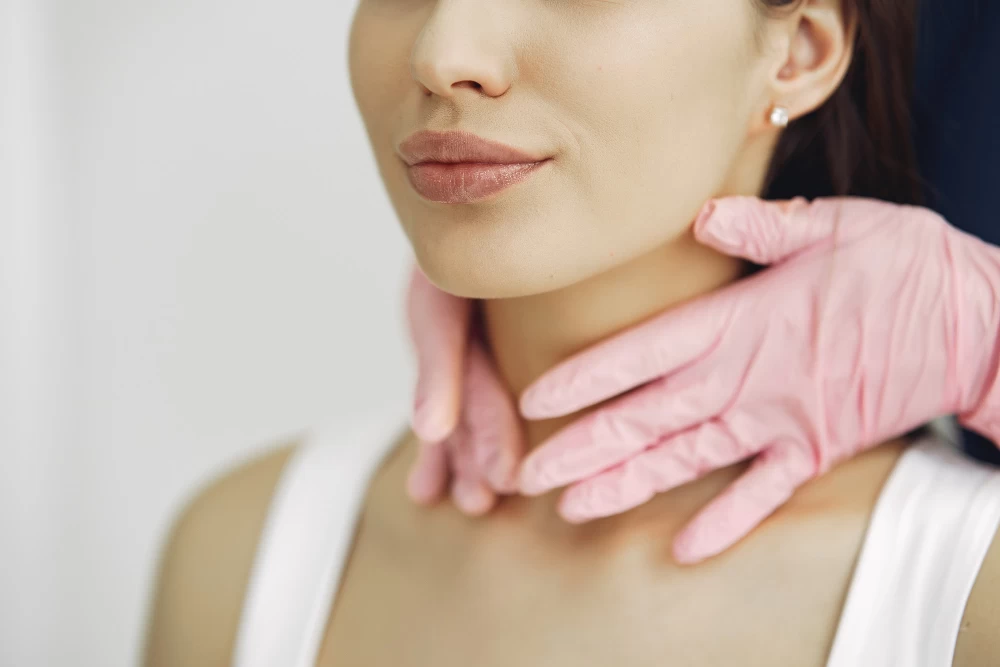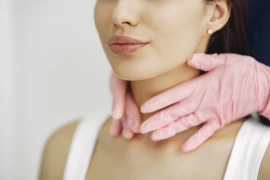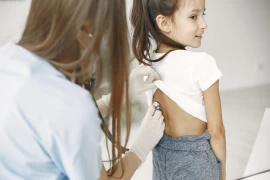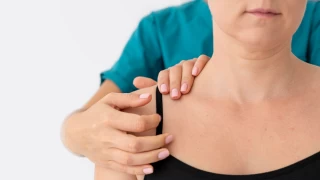
What is Curved Neck Disease?
- What is Curved Neck Disease?
- What are the Symptoms of Curved Neck Disease (Torticollis)?
- What are the Causes of Curved Neck Disease (Torticollis)?
- What are the Types of Curved Neck Disease (Torticollis)?
- How is the Diagnosis of Curved Neck Disease (Torticollis)?
- What is Curved Neck Disease (Torticollis) Treatment?
- What are the Points to Consider After the Treatment of Curved Neck Disease (Torticollis)?
Torticollis, also known as "nasty neck" or "crooked neck," is a condition that causes the head to turn to one side and the chin to the opposite. It occurs when the muscles in the neck that control head movement tighten or shorten, causing the head to twist or turn into an abnormal position.
There are two types of torticollis: congenital and acquired. Congenital torticollis is present at birth and is usually caused by abnormal positioning of the baby's head in the womb or at birth. Acquired torticollis can occur at any age and can be caused by a variety of factors, including neck or head injury, muscle spasms, nerve damage, or reaction to medication.
Torticollis symptoms include a visibly tilted or turned head, difficulty turning the head or neck, neck pain, and headaches. Treatment for torticollis may include physical therapy, stretching exercises, pain medication, or, in severe cases, surgery.
It's important to seek medical attention if you or someone you know is experiencing symptoms of torticollis, as early detection and treatment can lead to better outcomes.
What are the Symptoms of Curved Neck Disease (Torticollis)?
Torticollis, also known as "bitter neck" or "crooked neck," is a condition that causes the neck muscles to contract involuntarily, causing the head to tilt and/or twist. The most common symptom of torticollis is a visibly tilted or twisted head.
But other symptoms can include:
- Neck pain or discomfort
- Stiffness in neck muscles
- Limited range of motion in the neck
- Headache
- Shoulder pain or tightness
- Irregular shoulder height or posture
- Difficulty in activities that require looking up or turning the head
- Eye strain or vision problems due to head position
- Fatigue or weakness in neck muscles
- In severe cases, there may be a lump in the neck due to muscle spasms.
It is important to note that some cases of torticollis may be temporary and resolve on their own, while others may require medical attention. If you experience any of these symptoms, it is best to consult a healthcare professional for an accurate diagnosis and appropriate treatment plan.
What are the Causes of Curved Neck Disease (Torticollis)?
Torticollis, also known as a "nasty neck" or "crooked neck," is a condition in which the neck muscles contract, making it difficult to straighten the neck by tilting the head to one side.
There are several causes of torticollis, including:
- Congenital: Some babies are born with torticollis, usually as a result of an abnormality in the position of the head in the womb. This is known as congenital torticollis.
- Trauma: Neck or head injury can cause torticollis. This could be due to a car accident, fall, or sports injury.
- Muscle spasm or strain: Torticollis can also be caused by a sudden spasm or stretching of the neck muscles. This can be caused by poor posture, sleeping in an awkward position, or holding the head in an abnormal position for a long time.
- Neurological: Rarely, it can be caused by a neurological disorder such as torticollis, Parkinson's disease, or brain damage.
- Idiopathic: In some cases, the cause of torticollis is unknown and this is called idiopathic torticollis.
- Medications: Some medications can cause torticollis as a side effect, such as antipsychotic medications or some medications used to treat seizures.
It is important to see a doctor if you experience torticollis, as this can help identify the underlying cause and provide appropriate treatment.

What are the Types of Curved Neck Disease (Torticollis)?
Torticollis, also known as "excessive neck," is a condition characterized by a twisted or bent neck position.
There are several types of torticollis, including:
- Congenital torticollis: This type of torticollis is present at birth and is caused by the abnormal positioning of the baby's head in the womb or during birth.
- Acquired torticollis: This type of torticollis develops after birth and can be caused by a variety of factors such as muscle spasms, neck injuries or infections.
- Spasmodic torticollis: Also known as cervical dystonia, this type of torticollis is characterized by involuntary muscle contractions that cause lightheadedness or spinning.
- Secondary torticollis: This type of torticollis is caused by an underlying condition such as a brain injury or tumor, or a side effect of medications.
- Positional torticollis: This type of torticollis occurs when an infant's head is positioned in the same way over and over, causing the neck muscles to tense and the head to tilt to one side.
Treatment for torticollis depends on the underlying cause and the severity of the condition, but may include physical therapy, medication, or surgery.
How is the Diagnosis of Curved Neck Disease (Torticollis)?
Torticollis, also known as "bitter neck" or "crooked neck," is a condition in which the neck muscles contract, causing the head to tilt to one side and the chin to the opposite side. The diagnosis of torticollis is usually made based on a physical examination by a healthcare professional, such as a doctor or physical therapist.
During the physical exam, the healthcare provider will look for characteristic torticollis symptoms, such as a visibly tilted head, restricted range of motion in the neck, and muscle stiffness or tenderness. They may also ask about the onset and duration of symptoms, any recent injury or illness, and family history of similar conditions.
In some cases, imaging tests such as X-rays, CT scans, or MRI scans may be ordered to rule out other possible causes of symptoms or to determine the extent of underlying structural abnormalities. Blood tests may also be ordered to check for signs of infection or inflammation.
After a diagnosis of torticollis is made, the healthcare professional will develop a treatment plan based on the severity of the symptoms and the underlying cause. Treatment may include physical therapy exercises to stretch and strengthen neck muscles, medications to relieve pain or muscle spasms, and in severe cases, surgery to correct underlying structural abnormalities.
What is Curved Neck Disease (Torticollis) Treatment?
Crooked neck disease, also known as torticollis, is a condition in which the neck muscles involuntarily contract, causing the head to tilt to one side. This condition can be caused by a variety of factors including injury, genetics, and poor posture.
Treatment for torticollis may include a combination of physical therapy, medication, and in severe cases, surgery.
Here are some common treatments for torticollis:
- Physical therapy: A physical therapist can teach you exercises to stretch and strengthen neck muscles, which can help improve range of motion and reduce pain.
- Medications: Muscle relaxants and pain relievers may be prescribed to help manage symptoms.
- Botox injections: Botox injections can be used to relax the muscles that cause the neck to contract, which can help relieve symptoms.
- Surgery: In severe cases, surgery may be required to lengthen or reposition the affected muscles.
- Collars or collars: In some cases, a collar or collar may be used to support the neck and promote healing.
It is important to work with a healthcare professional to determine the best course of treatment for your individual needs.
What are the Points to Consider After the Treatment of Curved Neck Disease (Torticollis)?
After torticollis treatment, there are several points to consider to ensure a successful recovery.
These include:
- Follow-up appointments: It is important to attend all follow-up appointments you have with your doctor or physical therapist to monitor your progress and make sure your treatment is working effectively.
- Maintaining good posture: It is very important to maintain good posture after torticollis treatment. This includes ensuring your neck, shoulders, and back are properly aligned, and avoiding any position that could cause your neck to twist or turn.
- Exercise and stretching: Your doctor or physical therapist may recommend specific exercises and stretches to help improve your neck's range of motion and strengthen the muscles that support your neck.
- Pain management: Pain is a common symptom of torticollis. Your doctor may recommend pain management strategies, such as taking pain medications or applying heat or cold therapy to the affected area.
- Lifestyle changes: Making certain lifestyle changes can help prevent a recurrence of torticollis. This may include avoiding repetitive activities that can strain your neck, taking regular breaks to stretch and move, and maintaining a healthy weight.
- Supportive devices: Depending on the severity of your condition, your doctor may recommend wearing a neck brace or other supportive devices to help support your neck and maintain good posture.
- Psychological support: Torticollis can be a difficult condition to live with and many people experience emotional distress as a result. Psychological support, such as counseling or therapy, can help you deal with the emotional aspects of the condition and improve your overall quality of life.




